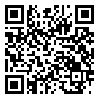BibTeX | RIS | EndNote | Medlars | ProCite | Reference Manager | RefWorks
Send citation to:
URL: http://ioh.iums.ac.ir/article-1-1496-en.html
Background and aims: Today, to improve workplace safety, more focus is on organizational and managerial factors including the organization climate and in particular the safety climate. Given that safety perception and attitudes of employees toward workplace safety situation is different in an organization so, for measuring these differences in the various conditions, including different job positions and type of work contract can be used standardized questionnaires.The aim of this study was to analysis of the safety climate using Nordic questionnaire in a metal industry
Methods: In this study was used the Nordic NOSACQ-50 questionnaire to measuring safety climate among different employee groups of a metal industry. A total of 300 questionnaires were distributed among employees, the results of safety climate scores obtained by 267 employees were analyzed using SPSS 20. In this study were evaluated the influence of job position, shift work, type of work contracts, job type (clerical and non-clerical) and demographic variables on perception of safety climate.
Findings: Calculation of the mean safety climate scores showed that the total mean of safety climate was 2/88. The highest and the lowest score were related to workers’ trust in the efficacy of safety systems (3.35) and management safety justice (2.69), respectively. The results showed that there was a significant relationship between age and experience with safety climate. Similarly, there is a significant relationship between the job position and job type with safety climate. But, there was not observed significant relationship between variables such as shift work, education level and type work contract with the safety climate.
Results: The results of this study show the importance of evaluating safety climate among the different work groups. Especially managers and employees with more age and experience have a more positive perception of the safety of their workplace safety. Workplace stressors may also have a negative impact on the safety climate.
Keywords: Safety climate, Nordic Safety Climate Questionnaire (NOSACQ)
Received: 2015/04/27 | Accepted: 2016/02/2 | Published: 2016/12/31
| Rights and permissions | |
 |
This work is licensed under a Creative Commons Attribution-NonCommercial 4.0 International License. |





